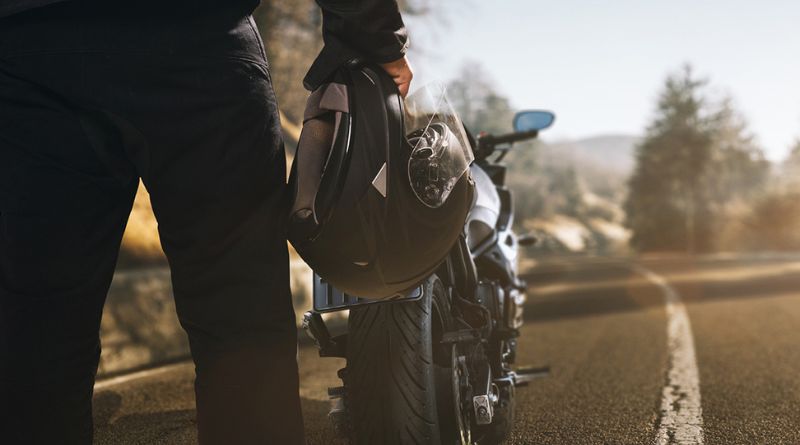Whether you’re a seasoned rider or a newcomer to the world of motorcycles, having the right gear is crucial for both safety and comfort. Motorcycle gear not only enhances your riding experience but also provides protection in case of accidents. Here’s a comprehensive look at the top 10 essential motorcycle gear items every rider should have.
Table of Contents
1. Helmet
A helmet is the most crucial piece of motorcycle gear. It provides protection for your head in case of an accident and is often required by law. Look for a helmet that meets safety standards such as DOT (Department of Transportation) or ECE (Economic Commission for Europe). Choose one with a comfortable fit, good ventilation, and an anti-scratch visor for clear vision.
2. Riding Jacket
A motorcycle riding jacket offers both protection and comfort. Look for jackets made from durable materials like leather or textile with built-in armor in key areas such as the shoulders, elbows, and back. A jacket with good ventilation will help keep you cool in warmer weather, while thermal liners can provide warmth during colder rides.
3. Gloves
Riding gloves are essential for protecting your hands and providing a secure grip on the handlebars. Choose gloves made from abrasion-resistant materials like leather or reinforced textile. They should offer good padding on the palms and knuckles, and ideally, be touchscreen compatible for convenience.
4. Riding Pants
Motorcycle riding pants are designed to provide protection to your lower body. Look for pants made from durable materials such as leather or reinforced textile with built-in armor at the knees and hips. Many riding pants come with adjustable waistbands and ventilation zippers for added comfort and flexibility.
5. Boots
Proper motorcycle boots offer protection for your feet and ankles. Choose boots made from sturdy materials like leather or synthetic composites with reinforced toe and heel areas. Look for boots with good grip soles and ankle support to prevent injuries during riding and walking.
6. Protective Armor
In addition to built-in armor in jackets and pants, you can also invest in standalone protective armor. Items such as back protectors, chest protectors, and knee guards can provide extra protection in case of a crash. These should be designed to be worn comfortably under your gear without restricting movement.
7. Rain Gear
Weather conditions can change rapidly, and having rain gear on hand is essential for staying dry and comfortable. Look for waterproof rain suits or overpants that are easy to pack and put on over your existing gear. Ensure they are breathable to prevent overheating and maintain comfort.
8. Ear Protection
Long rides can expose you to high wind and engine noise, which can lead to hearing damage over time. Invest in earplugs designed for motorcycling to reduce wind noise and protect your hearing without sacrificing the ability to hear important sounds like sirens or horns.
9. Communication System
A motorcycle communication system can enhance your riding experience by allowing you to stay in touch with fellow riders or receive GPS directions without distraction. Look for Bluetooth-compatible systems that offer clear audio, easy pairing, and long battery life.
10. Motorcycle Lock
Securing your motorcycle is crucial to prevent theft. Invest in a high-quality motorcycle lock, such as a disc lock or chain lock, to deter potential thieves. A lock that is both durable and difficult to cut through will provide added security for your bike when parked.
FAQs
1. Why is a helmet the most important piece of motorcycle gear?
A helmet is crucial because it protects your head, which is the most vulnerable part of your body in case of an accident. It helps reduce the risk of serious head injuries and is often required by law.
2. How do I choose the right size helmet?
To choose the right size helmet, measure the circumference of your head just above your eyebrows. Refer to the manufacturer’s sizing chart to find the helmet size that matches your measurement. The helmet should fit snugly without being uncomfortable.
3. What materials are best for motorcycle jackets and pants?
Motorcycle jackets and pants are typically made from leather or textile materials. Leather is durable and offers excellent abrasion resistance, while textile materials can be lighter and more breathable. Look for gear with built-in armor for added protection.
4. How often should I replace my motorcycle gear?
Replace your motorcycle gear if it shows signs of significant wear or damage. Helmets should be replaced every 5 to 7 years, even if they appear to be in good condition, as materials can degrade over time. Other gear should be inspected regularly for signs of wear and replaced as needed.
5. Are communication systems worth the investment?
Yes, communication systems can enhance your riding experience by allowing hands-free communication with other riders, receiving GPS directions, or listening to music. They improve safety by keeping you connected while minimizing distractions.
Investing in the right motorcycle gear ensures a safer and more enjoyable riding experience. By equipping yourself with these essential items, you’ll be prepared for various conditions and better protected on every ride. Stay safe and ride smart!
